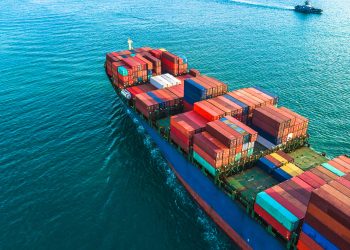Analysis by Drewry

Alliance services in teh Asia-North Europe trade, end-january 2015
The new carrier mega-alliances started in the East-West container trades this month. Now that the game of musical chairs has stopped, for the time being at least, Drewry reviews the competing services in the big Asia-North Europe trade to see which carrier group has the edge.
Later than some carriers had hoped, the new mega-alliances have now started operations in the main East-West container trades. By interrogating the forward schedules of the various partners, Drewry has taken a close look at how things stand now in the key Asia-North Europe trade and how things might develop by the end of the year. What stands out immediately is the fact that *every service is now controlled by one of the four alliances.
Maersk and MSC’s 2M is in the box seat, controlling 31% of the “effective” weekly capacity, following by the CKYHE and G6, both with 24%, and finally the Ocean Three on 21%. Our definition of effective capacity is nominal capacity (the average size of ships per service) minus deductions for deadweight and high-cube limitations and then again for out-of-scope cargoes, i.e. those relayed to areas outside the range. When relevant, operational capacities have also been adjusted for slots allocated to wayport cargoes, such as when a service also makes calls in say South Asia or the Mediterranean.
The total number of weekly Asia-North Europe services has been reduced from 22 to 21 compared with December 2014. The number of ships required to keep these services in a fixed-day weekly pattern has subsequently come down from 245 last month to 232 with smaller unwanted ships having been cascaded away from the trade. Despite these changes, the available capacity has largely been maintained with westbound slots of 218,500 teu per week, down just 1% on December. This has been achieved by the introduction of more new Ultra Large Container Vessels (ULCVs) – the average size of ship has increased from 12,400 teu to 12,600 – while the new schedules are more dedicated to North Europe with fewer wayport deductions.
Many feared that the formation of the mega-alliances would intensify the homogenisation of the industry whereby carriers can only compete with one another on price as they all have the same services. However, closer inspection of the schedules reveals that the alliances are far from uniform and between them they have created a pretty well-balanced network with wide port coverage at both ends of the trade.
Source: Drewry





























































